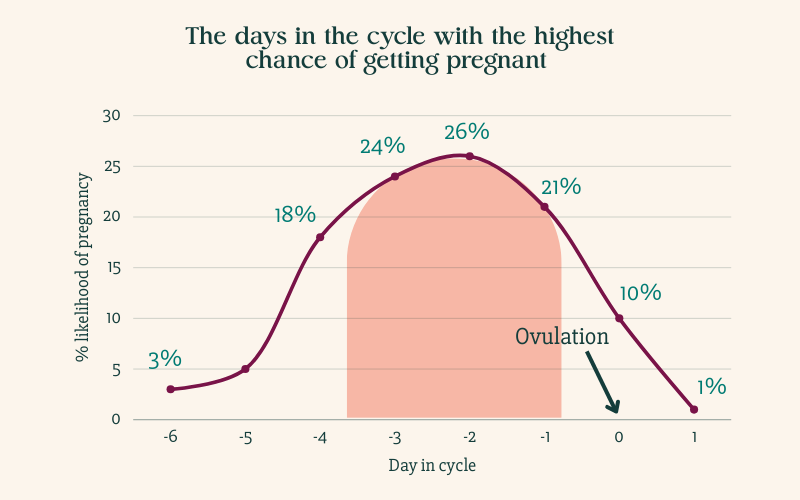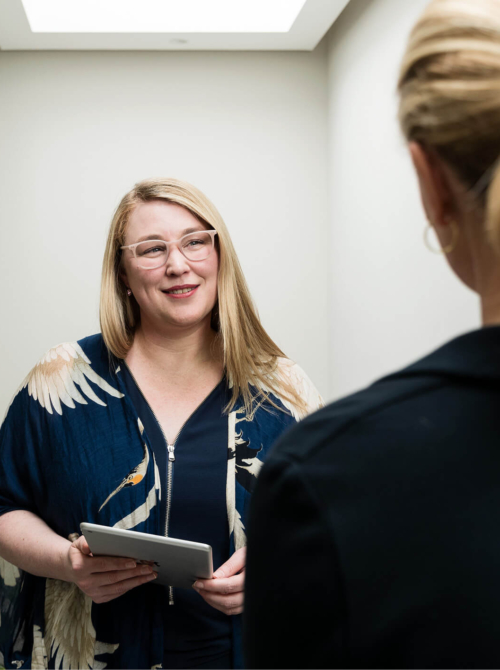When am I most fertile?
Understanding your cycle and fertile window is key to maximising your chances of conception. Mr George Bakolas, fertility specialist, obstetrician, and gynaecologist at The Evewell West London, explains the phases of a typical menstrual cycle, when you’re most likely to conceive, and shares tips for identifying your fertile days.
When am I most fertile?
Deciding to start or expand your family is an exciting step, but it often comes with questions and uncertainties. And one of the most common things our doctors hear from patients at the beginning of their fertility journey is, “When am I most fertile?”
Understanding your menstrual cycle and fertile window is key to maximising your chances of conception. We asked Mr George Bakolas, fertility specialist, obstetrician, and gynaecologist at The Evewell West London, to explain the phases of a typical menstrual cycle, when you’re most likely to conceive, and share tips for identifying your fertile days.
What is the fertile window?
The fertile window refers to the days in your menstrual cycle when you’re most likely to conceive. Pregnancy is possible during the five days leading up to ovulation and the day of ovulation. This is because sperm can survive in the female reproductive tract for up to five days, while the egg remains viable for fertilisation for about 12–24 hours after ovulation.
Understanding when this window occurs in your cycle requires a basic knowledge of the menstrual cycle and its phases.
Here’s a simple overview of when you are most fertile in a regular cycle.

The menstrual cycle: an overview
A typical menstrual cycle lasts 28–32 days, but cycles as short as 21 days or as long as 35 days can still be normal. The cycle begins on the first day of your period and ends the day before your next period starts. It is divided into two main phases:
- The Follicular Phase (Pre-Ovulation): This is the first half of your cycle, leading up to ovulation.
- The Luteal Phase (Post-Ovulation): This is the second half of your cycle, after ovulation.
The follicular phase: preparing for ovulation
The follicular phase begins on the first day of your period and ends with ovulation. During this time, the pituitary gland releases Follicle Stimulating Hormone (FSH), which stimulates your ovaries to mature several follicles, each containing an egg. Typically, only one follicle becomes dominant and releases a mature egg during ovulation.
Meanwhile, your uterine lining thickens in preparation for a potential pregnancy. As this phase progresses, your body produces increasing oestrogen levels, which are vital in stimulating ovulation.
Ovulation: The Peak of Fertility
Ovulation marks the release of a mature egg from the ovary. It typically occurs around the midpoint of your cycle – about day 14 in a 28-day cycle. However, ovulation might happen earlier or later if your cycle is longer or shorter. For example, in a 35-day cycle, ovulation might occur around day 21.
The fertile window spans the five days leading up to ovulation and the day of ovulation. This is your body’s most fertile time, as the egg is ready to be fertilised, and sperm can survive in the reproductive tract for several days, increasing the likelihood of conception.
The luteal phase: awaiting fertilisation
After ovulation, the luteal phase begins. The ruptured follicle in the ovary transforms into the corpus luteum, a temporary structure that releases progesterone. This hormone stabilises the uterine lining, creating an optimal environment for implanting a fertilised egg.
If fertilisation occurs, the embryo will implant in the uterine lining, and hormone production will continue to support the early stages of pregnancy. If fertilisation doesn’t happen, progesterone levels will drop, the uterine lining will shed, and a new menstrual cycle will begin.
How to identify your fertile window
Each woman’s cycle is unique, and pinpointing ovulation may take a little time and observation. Here are some methods to help you identify your fertile days:
- Track your cycle
Recording your cycle over several months can help you identify patterns. Apps like Flo or Clue can make tracking simple and convenient, giving you a better understanding of when you might ovulate.
- Monitor basal body temperature (BBT)
Your BBT rises slightly after ovulation due to increased progesterone. Charting your temperature daily with a reliable thermometer can confirm ovulation has occurred, although it won’t predict it in advance. Apps like Natural Cycles can assist with tracking BBT data.
- Use ovulation predictor kits (OPKs)
OPKs detect the surge in Luteinising Hormone (LH) that triggers ovulation. When the test is positive, ovulation is likely to occur within the next 24–36 hours, giving you a clear indication of your most fertile days.
- Observe cervical mucus
As you approach ovulation, your cervical mucus becomes clearer, stretchier, and more slippery, similar to raw egg whites. This change helps sperm travel more easily towards the egg and is a good indicator of fertility.
Irregular cycles and when to seek help
If your cycles are irregular or you’ve been trying to conceive for a while without success, you may benefit from a fertility review. Generally, if you’re under 35 and haven’t conceived after one year of trying, or over 35 and trying for six months, it’s a good idea to seek specialist advice.
Irregular cycles can make identifying your fertile window more challenging and may indicate underlying conditions like polycystic ovary syndrome (PCOS) or thyroid imbalances, which can affect ovulation. A fertility specialist can help uncover these issues and provide tailored guidance.
Empowering, or feeling overwhelmed?
Understanding your fertility is empowering, but it can also feel overwhelming. At The Evewell, we provide compassionate, expert support at every step of your journey. Whether you’re just starting to explore your fertile window or have been trying to conceive for some time, seeking personalised advice can make all the difference.
Remember, fertility is a profoundly individual experience, and no two journeys are alike. Understanding your body and seeking help when needed is a decisive step towards achieving your family goals.
Contact us at The Evewell West London for personalised advice or to book a fertility consultation. We’re here to guide and support you with expertise, understanding, and care.


